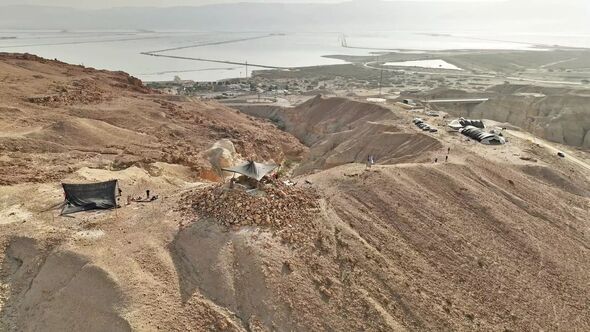Archaeologists working in the Judean Desert have made headway on an ambitious project to document and preserve important historical sites that have previously been threatened by looting and illegal excavations. Thousands of artefacts have been unearthed through the exploration of over 100 miles of cliffs and 900 caves.
The Israel Antiquities Authority (IAA) team has been working around Nahal Zohar, which lies in the Judean Desert in Israel and the West Bank, stretching from the Judean Mountains to the Dead Sea. Among the artefacts identified are scrolls, weapons, leather objects, wooden utensils and coin hordes. The most exciting discovery, however, was far larger.
A large pyramid-shaped complex built with hand-carved stones, each weighing hundreds of pounds, was discovered. Previously thought to date back to the First Temple period (1,000 BC to 586 BC), it is now believed to have operated around 2,200 years ago.
Nearby, they uncovered papyrus documents written in Greek and coins issued during the reigns of the Ptolemies and Antiochus IV, suggesting the building dates to the Hellenistic period.
The team, working in collaboration with the Ministry of Heritage, is using advanced rappelling equipment, cutting-edge technology and unique documentation methods to make its discoveries.
The researchers do not currently know the structure’s exact function but suggest it may have served as a tomb or a watchtower to safeguard important trade routes.
“The archaeological survey of the Judean Desert is one of the most significant operations in the history of the State of Israel,” said IAA director Eli Escusido. “The discoveries are exciting and of great value for historical and archaeological research.”
Heritage Minister, Amihai Eliyahu, praised the discovery, saying: “This is yet another testament to the historical and cultural wealth buried in our land’s soil. The pyramid structure and rare finds illuminate an important chapter in the history of the land of Israel and strengthen our deep connection to our heritage.
“I’m proud of the dedicated work by the Israel Antiquities Authority staff, who, alongside hundreds of enthusiastic volunteers, are saving these treasures from antiquity looters.
“The Judean Desert survey project is an excellent example of how the State of Israel preserves its cultural assets for future generations,” he added.
The dig has also been praised for its community role. The IAA has set up an organised camp for volunteers, providing food, water and nightly enrichment lectures on archaeology.
The excavation is planned to continue for another three weeks, with potentially many more exciting discoveries waiting to be found.
